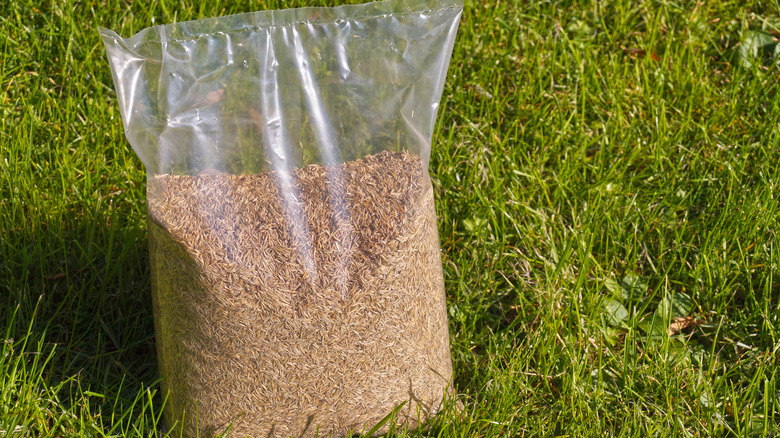In order to grow that gorgeous lawn that everyone’s looking to have, you have to plant grass. This concept might seem foreign to those of us who assume grass just appears out of thin air once you buy a house, but grass actually comes from seeds and has roots just like any other plant. These types of lawn grasses are commonly known as turf grasses and come in many different varieties such as bentgrass or the popular Kentucky bluegrass. When purchasing these grass seeds, however, some homeowners aren’t careful and end up making the biggest mistake they could make, which is not checking the label.
Just as you examine labels on food items to be sure of what you’re putting in your body, it is equally important to know what you’re buying when it comes to grass seeds. While you may have bought a five-pound bag of seed mix, it doesn’t exactly mean you have a five-pound bag of quality seed. A lot of seed manufacturers pour filler material into these bags to the point where your lawn isn’t getting enough grass seed to even be called a lawn. Once you know how to identify a quality bag of seed, you can avoid the risk of a terrible lawn.
Check the percentage of grass seed in the bag

Whether you’re building a new lawn from dirt or looking to regrow an empty patch of land, you need good-quality grass seed. Unfortunately, according to TikTok lawn expert @ope.itsmowtime, you likely won’t find it in a large retailer. The creator makes it clear that not reading the label on the seed packaging is the biggest mistake people make when buying it.
On the back of the label of the bag of seeds that you are considering should be the list of ingredients as required by the U.S. Department of Agriculture. The list of seeds in the mixture is presented here, as well as their percentages in the bag that you can add up to figure out the total. The inert matter percentage will also be on the bag. This material typically consists of filler — not grass seed. By checking the label on the back of a bag of Kentucky bluegrass seed in a big store, the creator found that a staggering 51.75% of it consisted of inert matter and only 47.99% actual grass seed. Meanwhile, a box of quality seeds he checked contained just 1.12% inert matter and everything else was seed.
You end up losing money buying the big-box grass seed, which clocked in at just $40, whereas you can find a five-pound bag of quality Fielder’s Choice Elite ryegrass blend for about $35. Your money should be on locally-produced grass seeds which are likely to be of higher quality than commercial seeds. As the creator said, “Convenience isn’t always the best option for you.”